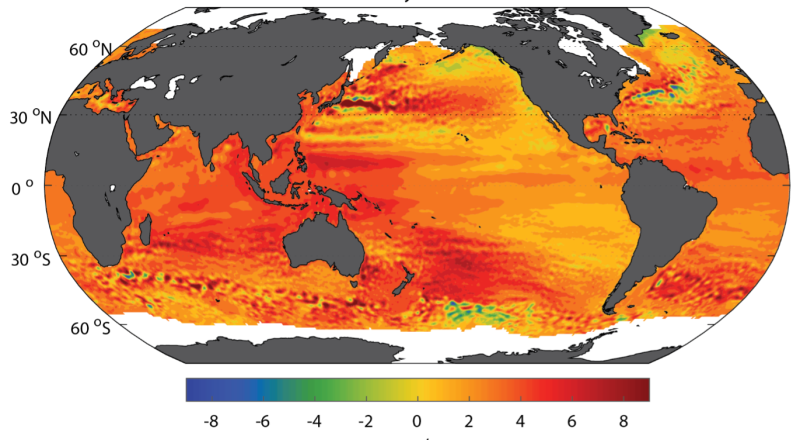Figure 1: Sea-level trends as measured by satellite altimetry over the January 1993 to December 2016 period.
Summary: Coastal sea levels are influenced by a potpourri of processes including vertical land motion and local and remote changes in ocean circulation, density, and mass. Combining a variety of different independent measurements, a new study deconstructs tide-gauge observations along the coast into the individual contributing processes. The scientists find that density changes in the open ocean have been the dominant source of coastal sea-level variability since the 1960s.
A new NASA-funded study led by Old Dominion University in Norfolk, Virginia finds that open ocean density changes have been the major driving force of multi-decadal sea-level changes across nine world-wide distributed coastal regions since the 1960s. The study, published on May 17th in the journal Nature Climate Change, examined tide gauge records in combination with independent measurements of vertical land motion, the ocean's density, and mass changes due to melting of land-locked ice and terrestrial water storage.
Sea-levels have been rising globally by about 1.8 mm/year since the mid-20th century. But, looking at individual tide gauges, which track sea levels along the coastlines, one can see very large variations that deviate substantially from the global mean. For instance, along the US east coast multi-decadal rates of up to 7 mm/year have not been unusual. Some of these variations can be explained by vertical motion of the land on which tide gauges are grounded. Also, the mass loss from glaciers and large ice-sheets leaves, due to accompanied changes in the Earth's gravity fields, a local signature in coastal sea level. However, while undoubtedly important, these factors can only explain a portion of the sea-level variations that coastal regions have experienced recently.
"Our new study shows that it is indeed the contribution of currents that drive the majority of the large ups and downs that we see in coastal sea level," says Sönke Dangendorf, assistant professor in the Ocean & Earth Science Department and the Center for Coastal Physical Oceanography at ODU and lead author of the study. Currents such as the Gulf Stream move water from the open ocean where there is more water to warm and expand to the coasts. "We indeed find that in most of our nine investigated regions coastal sea level changes covary with density changes that are typically hundreds to thousands of kilometers away from the coastline," says Dangendorf. "The sea level here in Norfolk, for instance, is significantly correlated to density changes west of Newfoundland." The scientists used this information to reconstruct coastal sea-level changes solely based on density information from the open ocean and compared it, together with independent estimates of vertical land motion and mass changes due to land-locked ice and terrestrial water storage, to the observed changes from tide gauges at the coast. In all regions, open ocean density changes explain most of the coastal sea level variations at timescales up to a few decades.
"Many locations along the U.S. coasts have seen an exponential increase of minor tidal flood events over the last decades that is directly tied to accelerated coastal sea-level rise," explains Dr. Tal Ezer from ODU and co-author of the study. For coastal communities such as those in the Hampton Roads region there is an urgent need for more robust future predictions of sea-level rise and coastal flooding. Dr. Thomas Frederikse, co-author and scientist at the Jet Propulsion Laboratory, says "one of the major challenges for projecting future coastal sea-level is solving the puzzle whether and how large-scale ocean processes affect sea level at the coast. Here we show that most sea-level variations in this region are a response to changes in the open ocean. With this information, we can make more accurate coastal sea-level projections for the coming decades and centuries."
The study was also co-authored by Dr. John Klinck from ODU, Dr. Ben Hamlington from NASA's Jet Propulsion Laboratory in Pasadena, California, and Dr. Leon Chafik from the University of Stockholm in Sweden.



